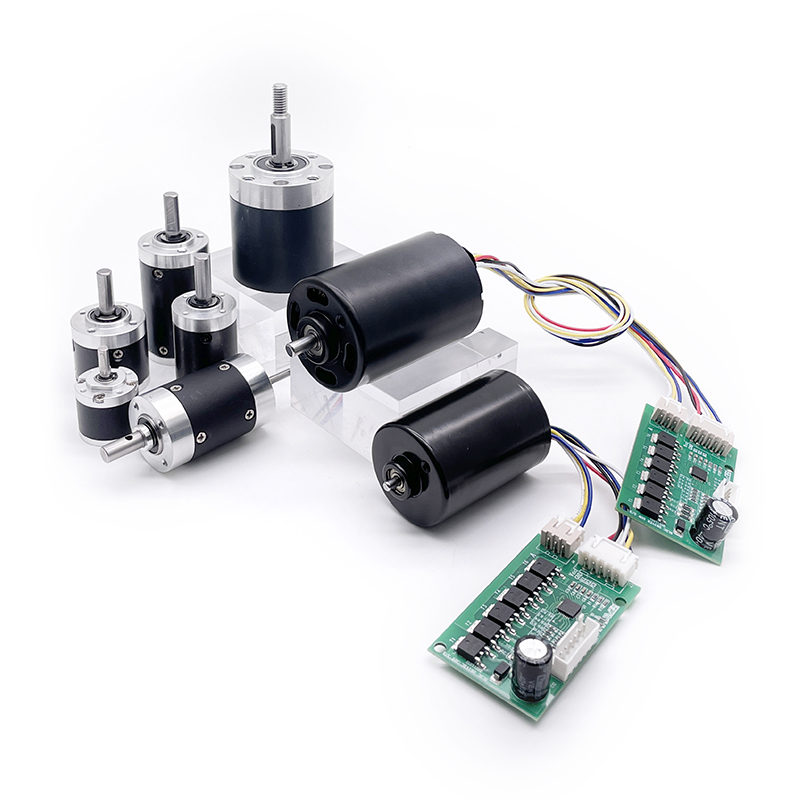Nowadays, in practical applications, micro motors have evolved from simple starting control and power supply in the past to precise control of their speed, position, torque, etc., especially in industrial automation, office automation and home automation. Almost all use electromechanical integration products that combine motor technology, microelectronics technology and power electronics technology. Electronicization is an inevitable trend in the development of micro and special motors.
Modern micro-motor technology integrates many high-tech technologies such as motors, computers, control theory, and new materials, and is moving from military and industry to daily life. Therefore, the development of micro-motor technology must adapt to the development needs of pillar industries and high-tech industries.
Wider usage scenarios:
1. Micro motors for home appliances
In order to continuously meet user requirements and adapt to the needs of the information age, to achieve energy conservation, comfort, networking, intelligence, and even network appliances (information appliances), the replacement cycle of home appliances is very fast, and high requirements are put forward for the supporting motors. Requirements for efficiency, low noise, low vibration, low price, adjustable speed and intelligence. Micro motors used in household appliances account for 8% of the total micro motors: including air conditioners, washing machines, refrigerators, microwave ovens, electric fans, vacuum cleaners, dewatering machines, etc. The annual demand in the world is 450 to 500 million units (sets). This type of motor is not very powerful, but has a wide variety. The development trends of micro motors for home appliances include:
①Permanent magnet brushless motors will gradually replace single-phase asynchronous motors;
② Carry out optimized design and improve product quality and efficiency;
③Adopt new structures and new processes to improve production efficiency.
2. Micro motors for automobiles
Micro motors for automobiles account for 13%, including starter generators, wiper motors, motors for air conditioners and cooling fans, electric speedometer motors, window rolling motors, door lock motors, etc. In 2000, the world’s automobile production was about 54 million units, and each car required an average of 15 motors, so the world needed 810 million units.
The key points for the development of micro motor technology for automobiles are:
①High efficiency, high output, energy saving
Its operating efficiency can be improved through measures such as high speed, high-performance magnetic material selection, high-efficiency cooling methods, and improved controller efficiency.
②Intelligent
Intelligentization of automobile motors and controllers enables the car to run at its best and minimize energy consumption.
3. Micro motors for industrial electrical drive and control
This type of micro motors accounts for 2%, including CNC machine tools, manipulators, robots, etc. Mainly AC servo motors, power stepper motors, wide speed DC motors, AC brushless motors, etc. This type of motor has many varieties and high technical requirements. It is a type of motor whose demand is rising rapidly.
Micro motor development trend
After entering the 21st century, the sustainable development of the world economy is faced with two key issues – energy and environmental protection. On the one hand, with the progress of human society, people have higher and higher requirements for the quality of life, and the awareness of environmental protection is getting stronger. Special motors are not only widely used in industrial and mining enterprises, but also in commercial and service industries. Especially more products have entered family life, so the safety of motors directly endangers the safety of people and property; vibration, noise, Electromagnetic interference will become a public hazard that pollutes the environment; the efficiency of motors is directly related to energy consumption and the emission of harmful gases, so the international requirements for these technical indicators are becoming more and more stringent, which has attracted the attention of the domestic and foreign motor industry, from the motor structure, Energy-saving research has been carried out in many aspects such as technology, materials, electronic components, control circuits and electromagnetic design. On the basis of excellent technical performance, the new round of micro motor products will also implement relevant policies for the purpose of energy saving and environmental protection. International standards promote the progress of related technologies, such as new motor stamping, winding design, ventilation structure improvement and low-loss high magnetic permeability materials, rare earth permanent magnet materials, noise reduction and vibration reduction technology, power electronics technology, control technology, and electromagnetic interference reduction technology and other applied research.
Under the premise that the trend of economic globalization is accelerating, countries are paying more attention to the two major issues of energy conservation and environmental protection, international technical exchanges and cooperation are strengthening, and the pace of technological innovation is accelerating, the development trend of micro motor technology is:
(1) Adopt high and new technologies and develop in the direction of electronics;
(2) High efficiency, energy saving and green development;
(3) Develop towards high reliability and electromagnetic compatibility;
(4) Develop towards low noise, low vibration, low cost and price;
(5) Develop toward specialization, diversification, and intelligence.
In addition, micro and special motors are developing in the direction of modularization, combination, intelligent electromechanical integration and brushless, iron coreless and permanent magnetization. What is particularly noteworthy is that with the expansion of the application field of micro and special motors, the environmental impact With the changes, traditional electromagnetic principle motors can no longer fully meet the requirements. Using new achievements in related disciplines, including new principles and new materials, to develop micro-motors with non-electromagnetic principles has become an important direction in motor development.
Post time: Dec-01-2023


